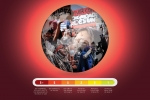By Own Correspondent
THE International Labour Organisation (ILO) has called on Zimbabwe to urgently address structural bottlenecks which are hindering the inflow of meaningful investments with the potential to create decent jobs, the Labour Market Diagnostic Analysis (LMDA) has observed.
The report noted that outside the public sector, employment creation ultimately depends on investors and entrepreneurs' decisions to start new or grow existing businesses but underscores that such cannot be achieved due to structural bottlenecks.
“The main issue facing the country is by far macroeconomic instability that generates uncertainty around the outcomes of investment decisions. After a period of relative stability between 2014 and 2019 following the implicit dollarization of the economy, structural imbalances re-emerged. The main culprit has been unsustainable fiscal deficits financed via the creation of quasi-money instruments resulting in an inflation and exchange rate depreciation spiral,” said the LDMA.
The survey said due to the above factors, inflation reached 737,3 percent in June 2020 and the official exchange rate moved from 1:2,71 to the US Dollar in March 2019 to 1:83 by end of August while in the parallel market the exchange rate was 1: 100 to the US Dollar. At the same time, the peg to the dollar and the auction system for foreign exchange (FX) have affected the competitiveness of the export sector and thus impacted growth and employment creation.
“Maintaining the official parity of the Real Time Gross Settlement (RTGS) dollar with the US Dollar, provided opportunities for rent seeking as exchange rate distortions crushed exporters to the benefit of well-connected importers.37 During the first three years of the dollarization (2009-2011), prices were stable, and the real exchange rate depreciated by around 30 per cent. Since then, however, the real exchange rate has appreciated by over 40 per cent due to inflation and the appreciation of the US Dollar against the South African Rand,” the report said.
The survey says the current auction system, where importers compete for FX, has contributed to realigning the official and market exchange rates but the market premium continues to be above 20 %s suggests that the real exchange rate remains below its equilibrium level (i.e., the local currency is still overvalued affecting the competitiveness of exports).
“As a result, investments are also constrained by an inadequate business environment that increases transaction costs and reduces rates of return, and severe problems accessing finance. This is illustrated by different indicators compiled by organizations such as the ILO, the World Bank, and the World Economic Forum.
“For instance, indicators such as the cost of starting a business, transportation and utilities, infrastructure and ICT adoption rank close to the bottom relative of the distribution of countries ,” said the LDMA.
The report observes that the skills of the labour force, including in terms of digital skills, and the lack of systems to intermediate labour also seem to be a problem.
“At the same time, the country ranks poorly in indicators such as credit to the private sector only 22,4 percent of GDP, access to finance by SMEs and the soundness of banks,” added the survey report.








Leave a comment